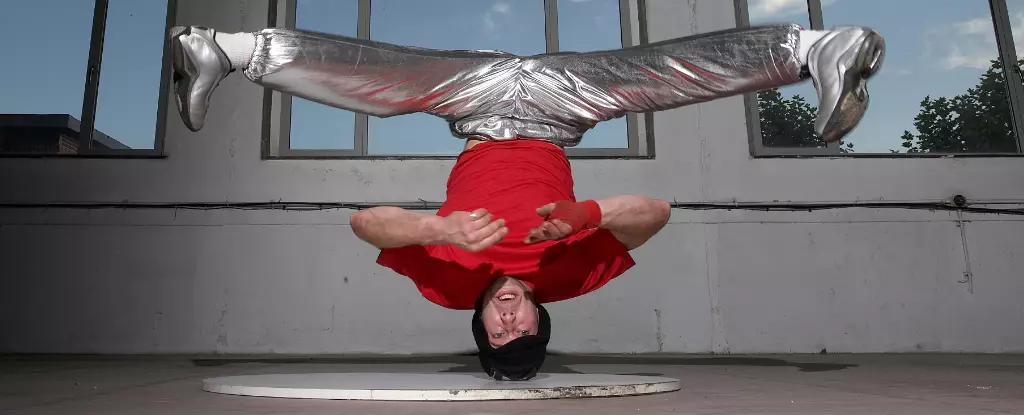Breakdancing, a dynamic and expressive street dance form, has enchanted generations with its agility, style, and creativity. Yet, while many admire the physical prowess and skill that breakdancers exhibit, few know about the hidden physical repercussions that come with this labor-intensive dance art. The term “headspin hole” has emerged from a recently published 2024 medical case report detailing a phenomenon affecting breakdancers after years of performing headspins. This condition manifests as a cone-shaped lump on the head, stemming from the repetitive trauma of this signature move. The existence of such injuries sheds light on the often-overlooked intersection of art and health, urging a deeper consideration of how artistic endeavors can impact the human body.
The intriguing condition known as “headspin hole,” formally termed “breakdancer bulge,” illustrates an adaptive bodily response to prolonged physical stress. Upon performing headspins, dancers subject their heads to constant rotation, which leads to the thickening of the epicranial aponeurosis, a connective tissue layer that protects the skull. This thickening can be likened to how calluses form on hands and feet in response to friction; the body makes modifications to safeguard itself against continuous trauma.
The implications of this condition extend beyond the immediate physical changes. Approximately 30 percent of breakdancers experience hair loss and inflammatory symptoms as a direct result of head-spinning activities. Ultimately, “headspin holes” not only alter aesthetics but can influence confidence, self-image, and overall mental health among dancers.
A Spectrum of Injuries Beyond the Cone
While “headspin holes” represent a unique challenge for breakdancers, they are by no means the sole risk. Numerous injuries plague those engaged in this high-energy dance form, including ailments affecting the wrists, knees, hips, and ankles. Moves such as the “windmill” and “backspin,” which require vigorous and often abrupt movements, can lead to bursitis—an inflammation of the fluid-filled sacs that cushion the joints.
The world of breakdancing spans various techniques and styles, each bearing its own injury risks. The potential for serious accidents cannot be understated; broken necks and pinched nerves are grim realities for some dancers. Ukrainian breakdancer Anna Ponomarenko, for example, faced the harrowing experience of paralysis due to a pinched nerve but remarkably made a full recovery to represent her country in the highly competitive Paris 2024 Olympics.
Protective Measures: The Case for Safety Equipment
In light of the myriad of injuries, it is crucial for breakdancers to recognize the significance of injury prevention. Similar to other sports, incorporating protective gear can substantially reduce injury rates. While breakdancing culture often prioritizes style over safety, those who minimize risk through appropriate equipment can enjoy their craft while safeguarding their well-being.
The hesitance to utilize protective measures often stems from a desire to maintain the purity of dance performance. However, a shift in perspective toward embracing safety could fundamentally reshape the way breakdancers engage with their art and can contribute to a longer-lasting career.
Interestingly, the phenomenon of cone-shaped heads isn’t reserved solely for breakdancers. Newborns, too, can exhibit conical skull shapes due to various childbirth-related factors. During delivery, a baby’s pliable skull can be compressed within the birth canal, leading to temporary misformations. Conditions like caput succedaneum and cephalohematoma—characterized by fluid accumulation and bruising—are common occurrences that typically resolve over time.
Moreover, craniosynostosis, occurring in roughly one in every 2,000 to 2,500 live births, results when the bones of an infant’s skull fuse prematurely, creating distinct head shapes. If detected early, medical intervention can aid in mitigating complications, highlighting an essential link between physical health and development in both dancers and infants.
While breakdancing remains a testament to artistic expression and athleticism, the revelations surrounding headspin holes and other bodily consequences cannot be ignored. As dancers continue to spin, twist, and defy gravity, the importance of awareness regarding potential injuries should be woven into the culture of this dynamic art form. Those drawn to the dance must balance their passion with prudence, taking the necessary steps to ensure that they can continue to express themselves physically without compromising their health. Emphasizing the significance of injury prevention can foster an environment where both creativity and safety coexist harmoniously in the realm of breakdancing.

